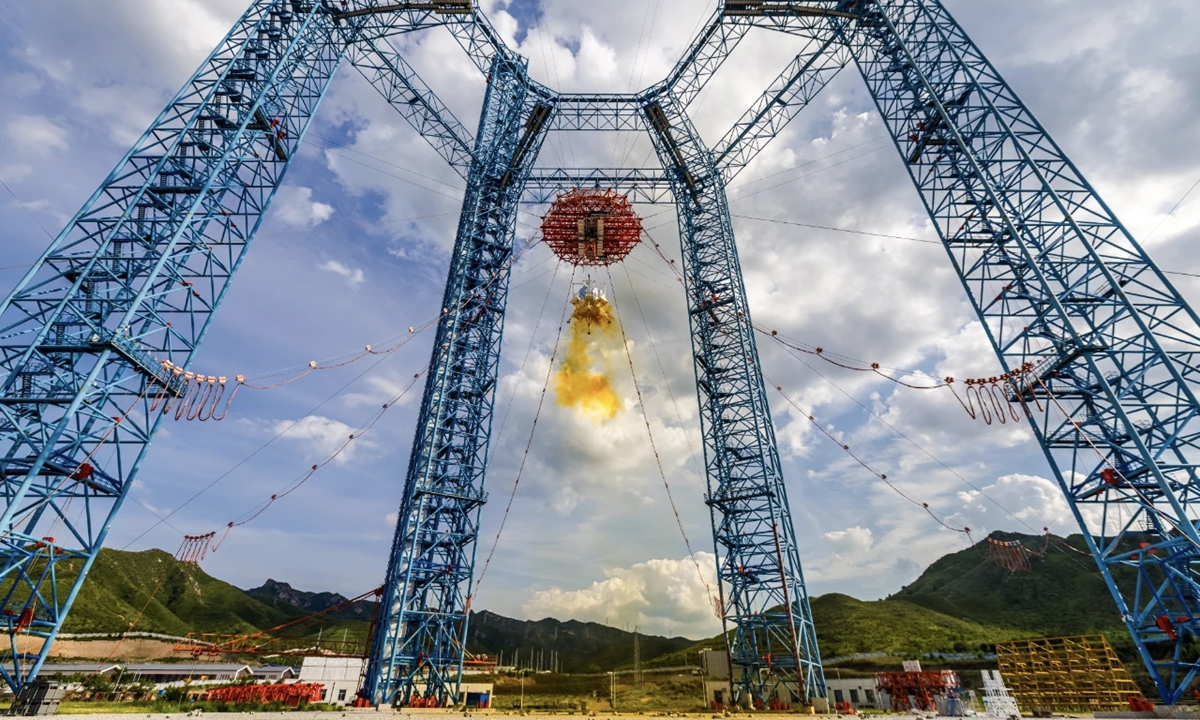
Photo: CMSA
Global Times learned from the China Manned Space Agency (CMSA) on Thursday that China’s Lanyue lander successfully completed a comprehensive landing and takeoff verification test at the extraterrestrial landing test site in Huailai county, North China’s Hebei Province on Wednesday. This test, the CMSA said, marks China’s first landing and takeoff experiment for a manned spacecraft on an extraterrestrial body.
With complex test conditions, a lengthy cycle, and high technical difficulty, it represents a critical milestone in the development of China’s manned lunar exploration program, the agency said in a statement to the Global Times on Thursday.
The test validated key systems, including the lander’s design, control strategies, lunar contact shutdown procedures, and interface compatibility between subsystems such as GNC (Guidance, Navigation, and Control) and propulsion. Its successful completion marks a significant new breakthrough in the development of China’s manned lunar exploration program.
According to a press release the CMSA provided to the Global Times on March 3, the country plans to conduct a manned lunar landing before 2030.
China will select taikonauts for its first manned moon landing mission from the current pool who have participated in spaceflight missions to the China Space Station, according to Yang Liwei, who is China’s first astronaut and also deputy chief designer of China’s manned space program.
Two carrier rockets will launch a manned spacecraft and a lunar lander into lunar orbit. After rendezvousing and docking, astronauts will enter the lander. Upon the landing on the moon’s surface, astronauts will operate the lunar rover for scientific exploration, Xinhua News Agency reported on March 3.
In February, the CMSA unveiled that the moon-landing spacesuit is named Wangyu, meaning gazing into the cosmos, and the manned lunar rover is named Tansuo, meaning to explore the unknown, according to Xinhua.
Source link


